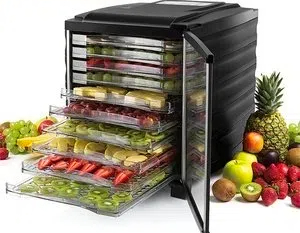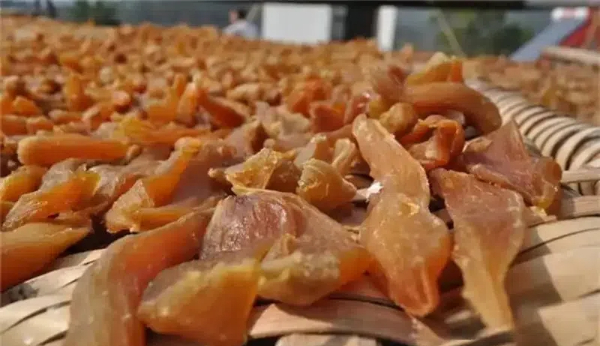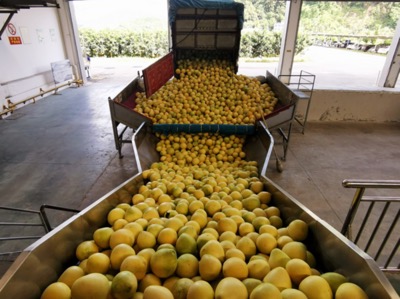
Content Menu
● Understanding Heat Pump Dryers
● Advantages of Heat Pump Dryers
● Pre-Installation Considerations
● Tools and Materials Needed
● Step-by-Step Installation Guide
>> Step 1: Unpack the Dryer
>> Step 2: Position the Dryer
>> Step 3: Connect the Drain Hose
>> Step 4: Plug in the Dryer
>> Step 5: Test for Levelness Again
>> Step 6: Initial Setup
● Operating Your Heat Pump Dryer
● Choosing Drying Programs
● Maintenance Tips
● Troubleshooting Common Issues
● Conclusion
● Frequently Asked Questions (FAQs)
>> 1. Do I need to vent my heat pump dryer?
>> 2. Can I install my heat pump dryer in a garage?
>> 3. How often should I clean the lint filter?
>> 4. Is it necessary to connect my heat pump dryer to plumbing?
>> 5. What should I do if my heat pump dryer is not drying clothes properly?
Installing a heat pump dryer can seem daunting, but with the right guidance and tools, it can be a straightforward process. This article provides a comprehensive step-by-step guide to help you successfully install your heat pump dryer, ensuring optimal performance and longevity.

Understanding Heat Pump Dryers
Heat pump dryers are an energy-efficient alternative to traditional dryers. They work by using a closed-loop system that recycles air, which helps to remove moisture from clothes without the need for external venting. This not only conserves energy but also protects the environment by reducing carbon emissions.
Advantages of Heat Pump Dryers
Heat pump dryers have several advantages that make them increasingly popular among consumers:
- Energy Efficiency: Heat pump dryers can reduce energy use by at least 28% compared to standard dryers. They recycle warm air, which means they consume significantly less electricity than traditional dryers.
- Cost Savings: While heat pump dryers may have a higher upfront cost than other types of dryers, their energy-saving capabilities translate into long-term cost savings. Reduced energy consumption can lead to substantial savings on your electricity bills over time.
- Gentle on Clothes: These dryers operate at lower temperatures compared to traditional models, minimizing the risk of fabric shrinkage, fading, or damage. This gentle drying process helps maintain the quality and longevity of your clothes.
- Versatile Installation: Heat pump dryers do not require external venting, making them suitable for various living spaces, including apartments or homes without venting capabilities. They can be installed in tight spaces, such as closets or laundry rooms.
- Advanced Features: Many heat pump dryers come equipped with features such as moisture sensors, anti-wrinkle technology, and smart settings that enhance user convenience and efficiency.
Pre-Installation Considerations
Before you begin the installation process, there are several important factors to consider:
- Location: Choose a dry, well-ventilated area with an ambient temperature between 5°C and 35°C (41°F to 95°F). Avoid placing the dryer in unheated garages or basements.
- Level Surface: Ensure the dryer will be placed on a flat, stable surface. Uneven flooring can lead to excessive vibration and operational issues.
- Electrical Supply: Verify that you have a dedicated electrical outlet that meets the dryer's voltage and amperage requirements. Avoid using extension cords or multi-plug adapters.
- Water Drainage: Although heat pump dryers do not require plumbing, they do produce water that needs to be drained. Position the dryer near a sink or drain for convenience.
Tools and Materials Needed
Before starting the installation, gather the following tools and materials:
- Level
- Screwdriver
- Adjustable wrench
- Drain hose (if applicable)
- User manual for reference
Step-by-Step Installation Guide
Step 1: Unpack the Dryer
Carefully unpack your heat pump dryer from its box. Remove all packaging materials, ensuring that you do not damage any components in the process.
Step 2: Position the Dryer
Place the dryer in your chosen location. Use a level to ensure it is perfectly flat. If necessary, adjust the leveling feet at each corner of the dryer until it is stable.

Step 3: Connect the Drain Hose
If your model includes a drain hose for automatic water drainage:
1. Locate the drain outlet on the back of the dryer.
2. Attach one end of the drain hose to this outlet.
3. Route the other end to your sink or floor drain, ensuring it has a downward slope to facilitate water flow.
Step 4: Plug in the Dryer
Connect your heat pump dryer to a dedicated electrical outlet. Make sure that it is properly grounded according to local electrical codes.
Step 5: Test for Levelness Again
After connecting everything, double-check that your dryer remains level. Adjust again if necessary.
Step 6: Initial Setup
Most manufacturers recommend allowing your dryer to sit for at least 2 hours after moving it before running it for the first time. This allows any refrigerant inside to settle properly.
Operating Your Heat Pump Dryer
Once installed, familiarize yourself with the control panel and settings of your heat pump dryer. Most models come with various drying programs tailored for different fabric types and load sizes.
Choosing Drying Programs
Heat pump dryers typically offer multiple drying programs designed for various fabrics:
- Cotton: Suitable for everyday items like t-shirts and towels.
- Synthetics: Ideal for polyester blends that require lower temperatures.
- Delicates: For fragile fabrics like lace or silk that need gentle care.
Using these settings appropriately can enhance drying efficiency while protecting your garments from damage.
Maintenance Tips
To ensure longevity and efficiency:
- Regularly clean the lint filter after each use.
- Empty the water tank frequently if not connected to a drain.
- Periodically check for any blockages in air intake areas.
- Schedule routine maintenance checks as recommended by the manufacturer.
Troubleshooting Common Issues
Even with proper installation and maintenance, issues may arise with your heat pump dryer. Here are some common problems and their solutions:
1. The Dryer Won't Start:
- Ensure it's plugged in and that the electrical outlet is working.
- Check if the door is securely closed; many dryers have safety mechanisms preventing operation if not closed properly.
2. Clothes Aren't Drying Properly:
- Ensure you're not overloading the dryer.
- Check lint filters and drainage systems for blockages.
- Verify you're using appropriate drying settings for your load type.
3. The Dryer Is Making Strange Noises:
- Rattling sounds may indicate loose change or debris in the drum.
- Thumping noises might come from an uneven load or an unlevel dryer.
4. The Dryer Shuts Off Too Soon:
- A malfunctioning moisture sensor might cause premature shutdowns; cleaning it can help.
- Ensure adequate ventilation around the unit; overheating can trigger automatic shutdowns.
5. Extended Drying Times:
- Check for lint build-up in filters or ducts.
- Ensure proper airflow around the appliance; obstructions can hinder performance.
Conclusion
Installing a heat pump dryer is manageable with careful planning and execution. By following these steps and maintaining your appliance properly, you can enjoy efficient drying while minimizing energy consumption. The benefits of heat pump dryers extend beyond just saving energy; they also provide gentle care for your fabrics while being versatile enough for any home environment.

Frequently Asked Questions (FAQs)
1. Do I need to vent my heat pump dryer?
No, heat pump dryers do not require external venting as they recycle air within their system.
2. Can I install my heat pump dryer in a garage?
It is not recommended because garages often have fluctuating temperatures outside of the optimal range for operation.
3. How often should I clean the lint filter?
You should clean the lint filter after every use to maintain efficiency and prevent fire hazards.
4. Is it necessary to connect my heat pump dryer to plumbing?
No, it is not necessary; however, having it near a sink or drain can make emptying the water tank easier.
5. What should I do if my heat pump dryer is not drying clothes properly?
Check for blockages in air intake areas and ensure that you are using appropriate drying settings for your load type.












